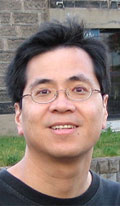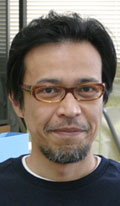
|
Prof. Shinichi MorishitaProfessor
Department of Computational Biology,
Graduate School of Frontier Sciences, University of Tokyo
|
Abstract
Encouraging Bioinformatics Researchers to Design Biological Research in the Era of Genome Information Big Bang
Sequencing genomes itself was a serious research problem when sequencing was extremely costly, laborious and time-consuming several years ago. To date, the wide spread of next-generation sequencers has been making it possible to collect enormous volume of genome-wide sequence data with less effort in a fairly short period. Because sequencing is not a limiting factor today, we are able to study a variety of long-standing biological questions, such as effects of genetic variations by re-sequencing the genomes of human and other species, unknown genomes by de-novo sequencing, and genome-wide epi-genomic states including chromatin structure and DNA methylation.
The bottleneck today would be sample selection/collection and data analysis, which are likely to take much longer time than sequencing. It is crucial for us to be very careful in designing feasible research plans that address fundamental biological questions and present a fantastic roadmap to the solution, considering limitations of next-generation sequencing and capacity of computational resources. In this planning process, bioinformatics researchers are expected to lead the discussion more enthusiastically through the collaboration with biologists and medical scientists. In this talk, I will introduce good and bad experiences that may be helpful for others.
�@�@
References
|
| (1) | Sasaki S, et al. "Chromatin-associated periodicity in genetic variation downstream of transcriptional start sites." Science, 2009 Jan 16;323(5912):401-4. |
| (2) | Qu W, et al. "Efficient frequency-based de novo short-read clustering for error trimming in next-generation sequencing." Genome Research, 2009 Jul;19(7):1309-15. |
| (3) | Saito TL, et al. "UTGB toolkit for personalized genome browsers." Bioinformatics, 2009 Aug 1;25(15):1856-61. |
| (4) | Ahsan B, et al. "MachiBase: a Drosophila melanogaster 5'-end mRNA transcription database." Nucleic Acids Research, 2009 Jan;37(Database issue):D49-53. |
| (5) | International Silkworm Genome Consortium. "The genome of a lepidopteran model insect, the silkworm Bombyx mori." Insect Biochemistry and Molecular Biology, 2008 Dec;38(12):1036-45. |
| (6) | Nakatani Y, et al. "Reconstruction of the vertebrate ancestral genome reveals dynamic genome reorganization in early vertebrates." Genome Research, 2007 Sep;17(9):1254-65. |
| (7) | Kasahara M, et al. "The medaka draft genome and insights into vertebrate genome evolution." Nature, 2007 Jun 7;447(7145):714-9. |
| �@ | �@ |
Profile
| Employment |
|
| 2003-present |
Professor, Department of Computational Biology,
Graduate School of Frontier Sciences, University of Tokyo |
| 1999-2003 |
Associate Professor, Department of Complexity Science and Engineering,
Graduate School of Frontier Sciences, University of Tokyo
Adjunct Associate Professor, Department of Information Science,
Faculty of Science, University of Tokyo |
| 1997-2000 |
Visiting Associate Professor, Institute of Medical Science |
| 1990-1992 |
Visiting Researcher, Department of Computer Science, Stanford University
IBM Almaden Research Center |
| 1985-1997 |
Researcher, IBM Japan |
�@
| Education |
|
| 1990 |
Ph.D., Department of Information Science, Graduate School of Science,
University of Tokyo, Japan |
| 1985 |
M.S., Department of Information Science, Graduate School of Science,
University of Tokyo, Japan |
| 1983 |
B.S., Department of Information Science, Faculty of Science,
University of Tokyo, Japan |
|
|
|





